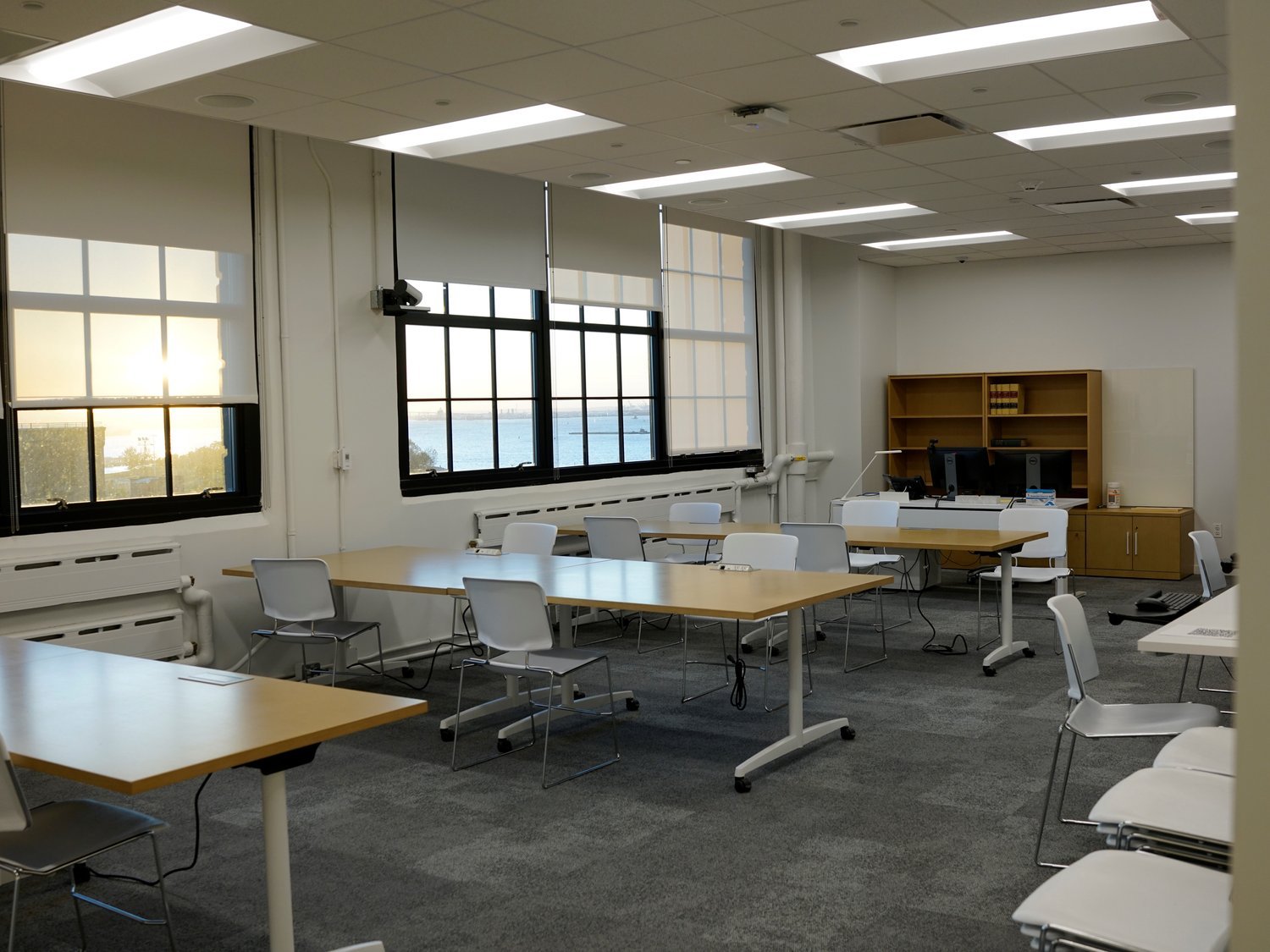In 2002, the City Council established the Archival Review Board. The five-member board was directed to “…render annually to the mayor a report reviewing the archival processing of any city papers.” Authored by Municipal Archives Director Sylvia Kollar, the recently published 2021 ARB Report, describes another year of exceptional accomplishments in the City’s archival program, all the more remarkable in light of the continuing COVID-19 pandemic.
Municipal Archives, Reading Room, Industry City, Brooklyn. NYC Municipal Archives.
Highlights of the Report:
The fiscal year 2021 accomplishments detailed in the report are many, but two in particular result from many years of planning and hard work—the new archival facility and the NYCMA Collection Guides. When the Municipal Archives moved from the Rhinelander Building in the mid-1960s (demolished to make way for 1 Police Plaza), its subsequent Manhattan locations (23 Park Row, Tweed Courthouse, and 31 Chambers) did not have the capacity to store the entirety of the collections. Additional storage space was provided in several locations, including a pier along the Hudson River and the Brooklyn Navy Yard, all of which were substandard for archival holdings. Beginning in 1986, the City leased space for the Archives in Industry City, Brooklyn. Although the facility was an improvement on prior locations, it was not suitable for long-term storage of archival materials.
Finally, in 2015, the Department of Citywide Administrative Services began the process of locating and planning for an appropriate archival storage facility and subsequently funding was secured for a new space. Located within the Industry City complex (not far from its current location) the new space would incorporate environmental controls, high-density shelving, and modern spaces for research as well as essential appraisal, processing, conservation and preservation work.
Construction of the new facility began in January 2020. Despite COVID-19 related delays, construction was completed in May 2021. There is a public reading room for research, a digital laboratory, collections processing offices, and a conservation triage lab. It provides more than 90,000 linear feet of storage across three floors, and a cold storage vault for photograph and audio-visual materials. Custom storage units were designed to house ledgers, rolled and oversize flat maps, as well as drawings and unique objects.
Preparation for moving into the new facility prompted extensive work to improve intellectual control over collections. As detailed in the report, these activities included barcoding, adding descriptive information, replacing more than 55,000 damaged containers and surface-cleaning. In total, more than 160,000 cubic feet of varied historical materials were relocated to the new site.
In another major achievement during the fiscal year, the Municipal Archives launched the NYCMA Collection Guides, a web-based platform that provides public access to detailed descriptions of archival collections. The Guide is the culmination of years of work on the part of Archives and IT Staff to build the vast data infrastructure of names, places and subjects that are linked to New York City agencies, offices, commissions, and administration.
Gable-End Elevation, Brooklyn Bridge Station, Brooklyn Terminal 1881. Brooklyn Bridge Drawings Collection. NYC Municipal Archives.
The ARB report also describes progress on several grant projects: preservation and digitization of the Old Town ledgers and processing of the Manhattan Building Plan Collection. Other work detailed in the report includes legacy data management, the transcription projects and reappraisal work and recent “adoptions” of archival and library items in need of conservation treatment as part of the “Save New York’s Past” fundraising initiative sponsored by the New York Archival Society.
Please take a few minutes to read the report and look for updates on progress of the archival program in future blogs.


